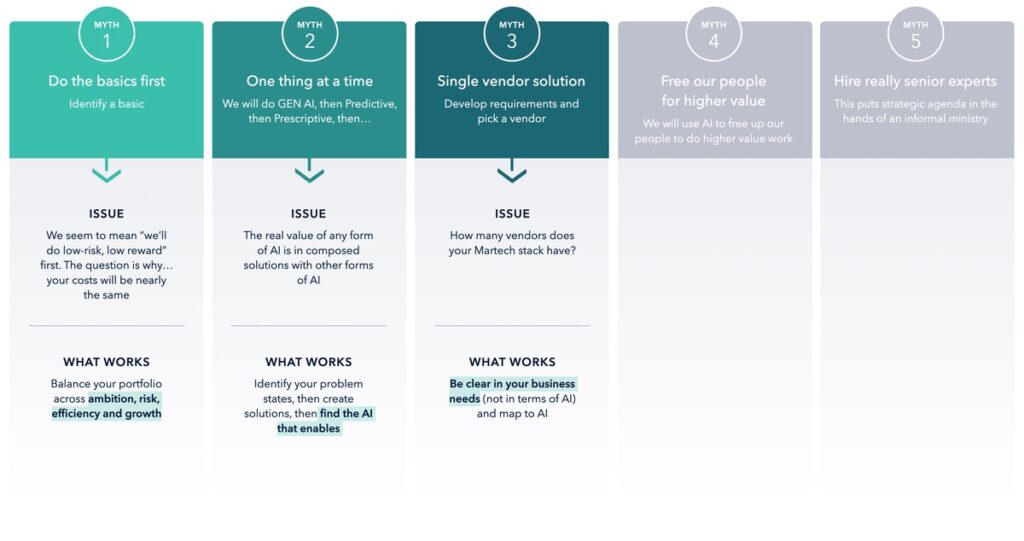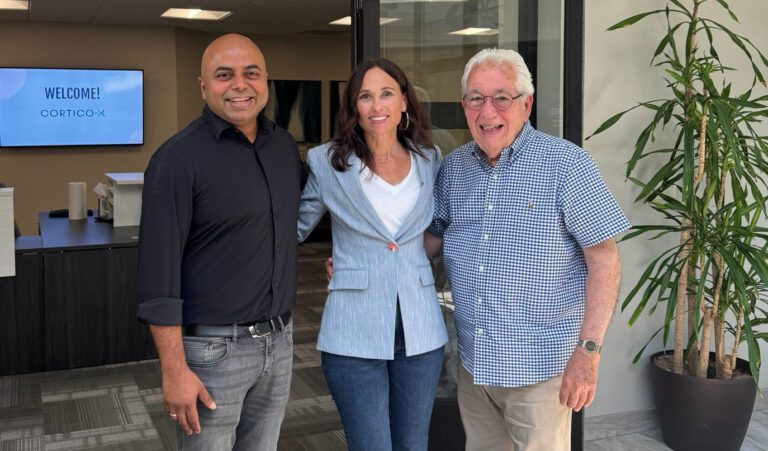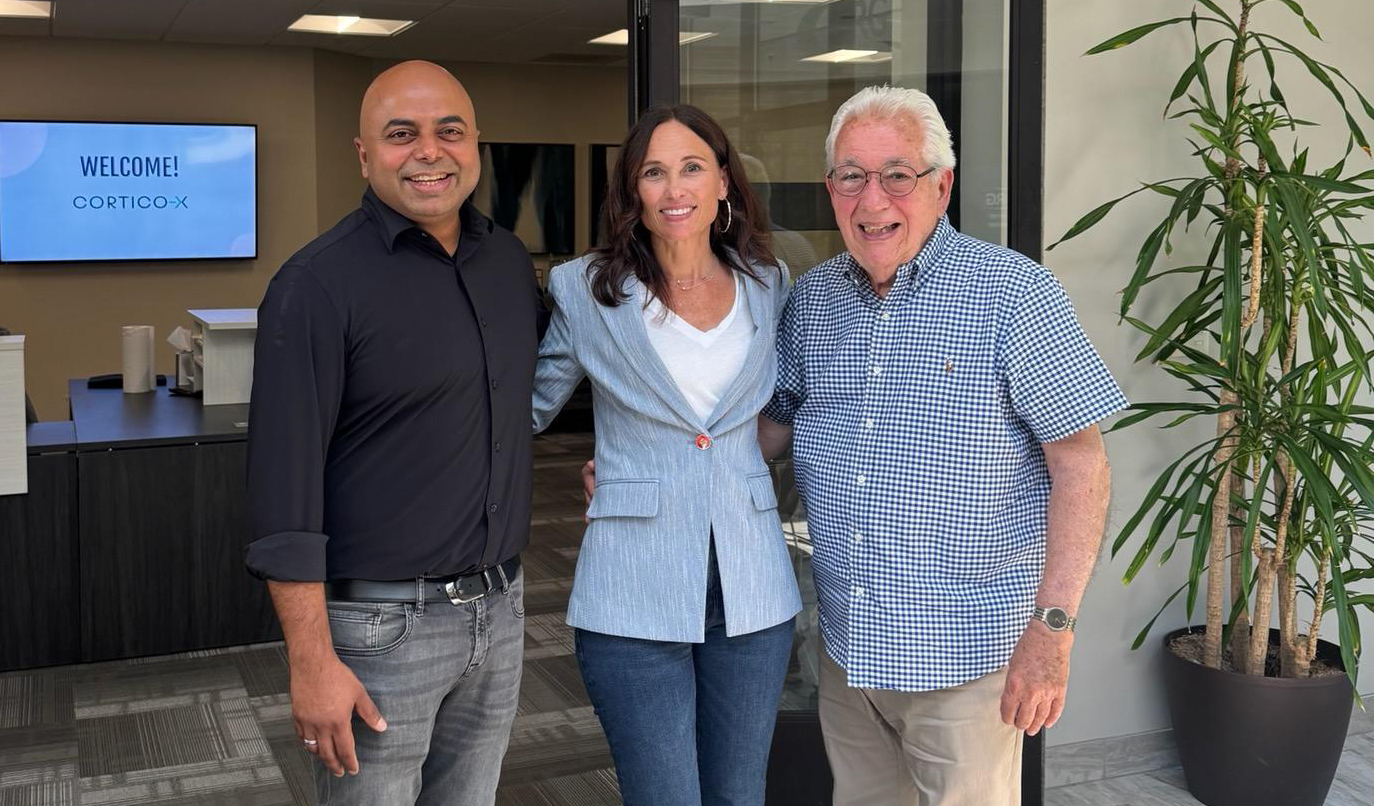
The Single Vendor Solution
Our third myth may be more accurately categorized as a fever dream that has infected us since the 90’s. That burning desire to have a single vendor providing the entirety of a core capability. That essentially applies to…nothing. You do not have a single vendor solution to anything in your business. A simple Martech stack has 7-10 vendors involved. Finance solutions often have 6-8. For the basics.
You use some form of an office suite not a megalithic office solution that rolls everything together. You will not have a single vendor solution for AI. I know you hate that but you won’t. All y’all IT and data folks, I know you’ve already come to terms with this. My fellow business geeks, you are still clinging to the myth that there’s a magic AI platform that will solve all your AI needs.
There is not.
This myth is proving particularly impervious to attempts to kill it. Working with our clients we’re seeing multiple reasons for this, but two that are more prevalent than any others:
- Naked desire. We just want to get to work with this AI thing, and we want to get one thing and have it implemented and be off to the races. This is understandable, but it’s equally unattainable. As we noted above, we accept this everywhere else. We must come to terms with it in the AI domain, or we will continue to make bad decisions and spend inefficiently and ineffectively.
- Over reliance on a use case approach. Use case approaches are most effective with mature capabilities and established tech stacks. In those instances we are optimizing or extending what we can deliver as a business. This approach is limiting in an emerging tech domain because:
- It has a high propensity to fall into myopic solutions based on internal domains.
- For the reason above, compelling business cases are challenging. We’re seeing this with clients now. The cost of an enterprise-grade GenAI solution is daunting at present and, despite what various players are saying, will remain so for the foreseeable future. Additionally, the value of the incrementalism-at-scale application of GenAI, outside of lacking imagination and creativity, is capped…because an efficiency play, while easier to believe and measure, is capped.
- The value creation potential of any individual innovation use case may be compelling, but it’s a leap of faith and high risk…good ideas fail all the time.
As with our prior myths (get the basics right and one thing at a time), the critical step is to identify the problem statements throughout the organization. Doing so allows you to see the totality of the opportunity, including both the incremental improvement cost/efficiency gains AND the higher risk/higher return value creation of innovating. Hence, you create new value propositions, new markets, or both.
An industry-specific GenAI solution makes sense, then. A larger LLM that such a solution sits on top of, and which specific LLM you use, becomes easier to identify. A GenAI tool that assists AI in interacting with humans (check out meetsynthia.ai), given widespread use across your internal domains, is no longer a nice-to-have but a must-have.
And blahblahblahblahblah. The important takeaway for business leaders is that you’ll be far better off if you STOP chasing the chimera of a single vendor solution and start focusing on your business problems, crafting high-value problem statements, and generating comprehensive requirements. This allows you to right-size your AI architecture, optimize your vendor selection, and prioritize your timeline.
We’ve just gotten over the hump in our five-part series on AI Myths and are heading to the home stretch. As I’ve mentioned before, Myth 4 is the one that is usually the most controversial with our clients, and… It’s. Up. Next!

Rik Reppe
leads the Cortico-X Innovation Practice, where he oversees efforts to disrupt the status quo and drive transformative change by breaking traditional molds to envision and create the future.











